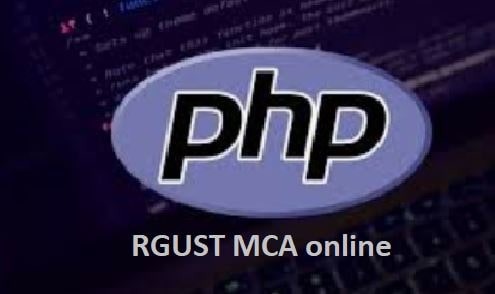
Top 25 Essential Concepts in PHP Language | Preparation Guide
Introduction
PHP (Hypertext Preprocessor) is a popular server-side scripting language designed for web development. It is widely used to create dynamic web pages and applications. This guide covers 25 fundamental concepts of PHP, providing learners with a comprehensive understanding of the key features and best practices for developing robust PHP applications.
1. Variables and Data Types
Variables are used to store data that can be used and manipulated throughout a program. PHP supports various data types including strings, integers, floats, booleans, arrays, objects, and NULL.
2. Operators
Operators are symbols that perform operations on variables and values. PHP includes arithmetic, assignment, comparison, logical, and string operators.
3. Control Structures
Control structures such as if, else, elseif, switch, while, do-while, and for are used to control the flow of a program based on conditions and loops.
4. Functions
Functions are reusable blocks of code that perform a specific task. They can take parameters and return values, allowing for modular and maintainable code.
5. Arrays
Arrays are used to store multiple values in a single variable. PHP supports indexed arrays, associative arrays, and multidimensional arrays.
6. Strings
Strings in PHP are sequences of characters. PHP provides a wide range of string functions for manipulating and working with strings.
7. Superglobals
Superglobals are built-in variables that are always accessible, regardless of scope. Common superglobals include $_GET, $_POST, $_SESSION, $_COOKIE, $_FILES, and $_SERVER.
8. Forms and Form Handling
Forms in PHP are used to collect user input. PHP scripts can handle form data using the $_GET and $_POST superglobals to retrieve submitted values.
9. Sessions
Sessions are used to store data across multiple pages. PHP provides functions to start, manage, and destroy sessions, allowing for persistent user data.
10. Cookies
Cookies are small pieces of data stored on the client's browser. PHP provides functions to set, retrieve, and delete cookies, allowing for client-side data storage.
11. File Handling
File handling functions in PHP allow for reading from and writing to files. Functions like fopen, fread, fwrite, and fclose are used to manage file operations.
12. Error Handling
Error handling in PHP involves managing runtime errors using error_reporting, set_error_handler, and try-catch blocks for exceptions. It helps in creating robust and error-resistant programs.
13. Object-Oriented Programming (OOP)
OOP in PHP involves creating classes and objects. Concepts like inheritance, encapsulation, polymorphism, and constructors are fundamental to OOP in PHP.
14. Namespaces
Namespaces are used to group related classes, interfaces, functions, and constants. They help in avoiding name conflicts and organizing code.
15. Autoloading
Autoloading allows for automatic loading of classes when they are needed, using spl_autoload_register. It simplifies code organization and improves performance.
16. PDO (PHP Data Objects)
PDO is a database access layer that provides a consistent interface for accessing different databases. It supports prepared statements, transactions, and error handling.
17. MySQLi
MySQLi (MySQL Improved) is an extension that provides a way to interact with MySQL databases. It supports procedural and object-oriented approaches for database operations.
18. Prepared Statements
Prepared statements are used to execute SQL queries securely. They help in preventing SQL injection attacks and improving query performance.
19. Regular Expressions
Regular expressions (regex) are patterns used for matching and manipulating strings. PHP provides functions like preg_match, preg_replace, and preg_split for working with regex.
20. JSON (JavaScript Object Notation)
JSON is a lightweight data interchange format. PHP provides functions like json_encode and json_decode for converting between JSON and PHP arrays/objects.
21. XML (eXtensible Markup Language)
XML is used for storing and transporting data. PHP provides extensions like SimpleXML and DOM for parsing and manipulating XML data.
22. cURL
cURL is a library for making HTTP requests. PHP provides functions to initialize, set options, execute, and close cURL sessions for interacting with APIs and web services.
23. Composer
Composer is a dependency manager for PHP. It allows developers to manage and install libraries and packages, ensuring that the right versions are used in a project.
24. MVC Frameworks
MVC (Model-View-Controller) frameworks like Laravel, Symfony, and CodeIgniter provide a structured way to develop web applications, promoting code reuse and separation of concerns.
25. Testing with PHPUnit
PHPUnit is a testing framework for PHP. It provides tools for writing and running automated tests, ensuring that code behaves as expected and improving software quality.
Conclusion
Mastering these 25 fundamental concepts of PHP equips learners with the knowledge and skills necessary to build robust and efficient web applications. PHP's versatility and extensive ecosystem make it a valuable language for server-side scripting and web development. By understanding and applying these core principles, developers can create scalable, maintainable, and high-performance applications, positioning themselves as valuable professionals in the software development industry.
Keywords: PHP language, web development, variables, data types, functions, OOP, sessions, cookies, PDO, MVC frameworks, Composer.








